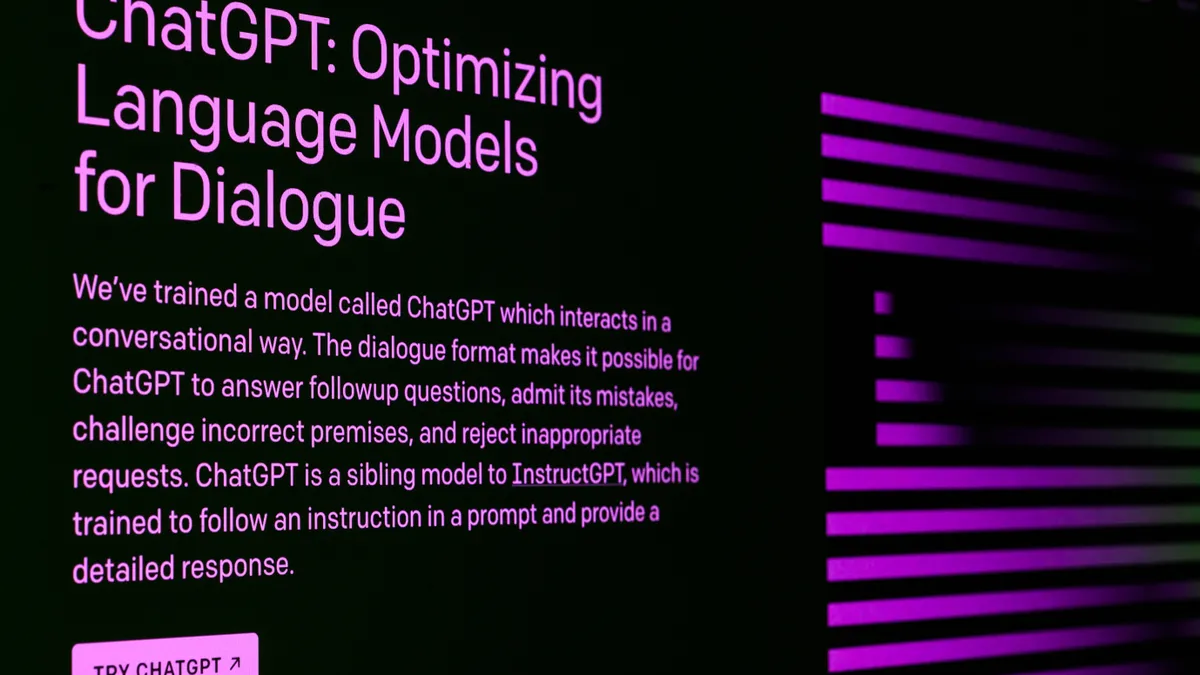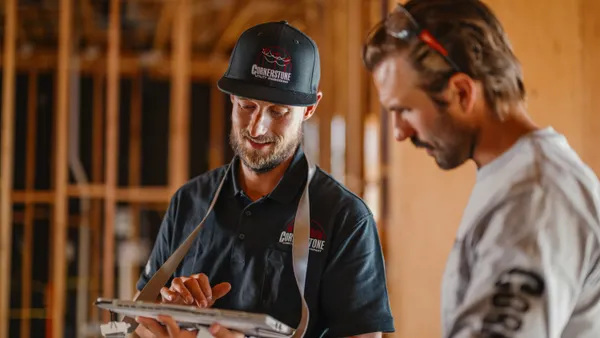ConTech Conversations presents a discussion with a leader in the construction technology field each month. Click here for past discussions.
Henning Roedel, DPR’s robotics lead, is an advocate for the use of tech on construction sites.
Through his studies at Stanford University, Roedel got involved with Scandinavian general contractor Veidekke Entreprenad AB, via the university’s Center for Integrated Facility Engineering.
Now, Roedel has a key role in the Redwood City, California, contractor’s tech adoption. As the firm’s main proponent for the use of robots on its jobs, Roedel likes to be selective about their application, and to make sure that the company has a good reason for their inclusion on projects.
Here, Roedel talks with Construction Dive about his experience, his advice for young people and DPR’s plans for future tech deployments.
Editor’s Note: This interview has been edited for brevity and clarity.
CONSTRUCTION DIVE: What do you think is the most exciting tech available in the market for contractors right now?
HENNING ROEDEL: Considering my job focus, I’d be remiss if I didn’t mention robotics; I think it has a lot of potential and is garnering a significant amount of attention because of the potential. It’s so exciting, and really, we’re just at the beginning of what it can ultimately achieve for the industry.
Right now, more broadly, we’re seeing a convergence of tech — from self-driving cars to battery tech — hitting the market; and construction robotics is leveraging all of it to generate amazing tools. The industry is also ripe and ready for it to make the day-to-day a bit safer and more productive. It’s something all construction companies need right now.
How do you push for more technology adoption, especially if people are resistant?
It’s a fine balance — but at DPR, we’re fortunate to have a core value of Ever Forward, which helps remove many barriers to trying out and bringing on new technologies. It encourages innovation and adoption to become a pillar within the company, vs. a one-off or something on the backburner. It’s part of the culture here.
Also, we have a lot of respect for the time of our people out on jobsites. We always ask first before pursuing a pilot.
Are you finding that people are having issues with adoption? If so, why?
Enacting change is difficult, especially in construction, where your attention is split in so many directions.
But our primary goal with tech is to make sure it solves problems, versus creating new ones; and generally at DPR, everyone understands and appreciates that.
Because we have a robust history of tech adoption, we know how to address many of the challenges that come with it.
It also simply gets easier with time. The more advanced the tech gets, the more intuitive the adoption becomes.
How are robotics factoring into DPR? What are some new pieces of tech that you're putting to use?
We’ve had two new deployments with the drywall robot Canvas and robotics firm Hilti. We’re also continuing to pursue many more conversations — and I think the broader exposure of my new role has helped entrepreneurs navigate directly to me.
At the moment, we have a pilot in the works surrounding crane-load stabilization technology that I think has a lot of promise, particularly for onsite safety.
What would you say to young people looking to get into the industry? What about contech specifically?
In the last five to eight years, we’ve seen a whole new realm of R&D hitting our industry; it’s been the biggest revolution and opportunity for growth in construction since I’ve been alive. I think it’s an incredibly exciting time for younger folks to get involved – whether it’s directly within operations, or indirectly through technologies that serve our industry.
For those interested or in the pipeline to join the construction workforce, my advice is to ask yourself a few key questions in order to figure out which lane you want to be in: Do you like working indoors or outdoors? Do you like hands-on work or do you prefer being in front of a screen?
Answering those questions first will land you in the spot that’s best for you; there are spaces for everyone in this industry.








































